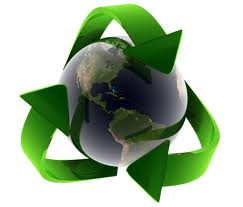What Is 3D Printing Any Ways?

What if there was a technological device that, when connected to your computer, could actually print out solid objects? If it sounds like something out of Star Trek – guess again! Although we’re not quite to the level of “Beam me up, Scottie!”, 3D printing is still very much a reality, and has the potential to completely re-shape the world as we know it.
What is 3D printing?

If you haven’t ever heard of 3D printing, it’s not surprising. Although the technology has been utilized within industrial settings for over 30 years, 3D printers for consumers and small businesses are just now beginning to take off. In a nutshell, 3D printing is an additive manufacturing technique which is used to build up objects in multiple layers. After one layer is printed and created, it is hardened, another layer is added, and so-forth. The process can take several hours to complete, however, the end result is a tangible 3D object.
What is 3D printing used for?
The most common use of this technology is to create rapid prototypes within the industrial field. These prototypes prove to be very useful for architects, automakers, etc. It is possible, though, for industrial 3D printers to create final products – especially in the case of metal objects. Traditionally, machining of metal componets would start with a piece of metal larger than the finished part. From this material metal would be removed on all surface’s and interiors such as cavity’s and holes. Imagine using a 3D printer that would lay down your part one layer at a time with all holes, cavities, contours and surfaces finished! The savings in time and materials that can be realized are tremendous.

Consumer-oriented 3D printers, on the other hand, are typically used for hobbies and personal interests. This type of 3D printing is more for enjoyment in seeing what you can do with this new technology. Even a small desk top 3D printer will set you back over $2,000 but if you want to be the first guy on the block to have a 3D printer and you love to tinker with new stuff the price could be worth it to you.
What methods are used in 3D printing?
There are several different methods of printing 3D objects to choose from. These options are based upon the material used for printing, the number of colors desired, the preferred resolution, and price. Here are several of the more common techniques used for printing in 3D:
- Fused deposition modeling – This is the most common method used in 3D printing. Fused deposition modeling (FDM) utilizes a spool of either plastic or metal wire which is melted and placed by the nozzle of the printer. The material will quickly harden before the next layer is added.
- Inkjet printing – These models are the most similar to the devices that are already used within homes and offices for standard 2D printing. By using special inks (such as resins and binders), an inkjet 3D printer will build up an object through layering. These printers are the only one of their kind that allow for custom coloring.
- Selective laser sintering – Sintering is a process that is used to create solid objects from powders. With selective laser sintering (SLS), this powder may be in the form of metal, plastic, ceramic, or glass. SLS makes use of a pulsed laser to “draw” a cross-section of the object to be printed. Once the powder fuses, another layer is formed on top. This method is typically used within the industrial sector, as it requires the usage of a powerful laser.
- Digital light processing – Most often referred to as DLP, this method of printing
 converts a vat of polymer into a strong solid via exposure to light. By utilizing this method, a very high accuracy and resolution can be achieved. Like SLS, this is generally a method utilized in the industrial field.
converts a vat of polymer into a strong solid via exposure to light. By utilizing this method, a very high accuracy and resolution can be achieved. Like SLS, this is generally a method utilized in the industrial field.
What is the future of 3D printing?
It will take some time, but the goal for 3D printing is to change the way the world does business and interacts. One day, the technology may allow us to craft just about anything – from tools to toys and everything in-between. Perhaps in the future we will be able to fax tangible objects, eliminating the need for postal services mail packages. Only time will tell what all this technology can achieve for us, but the future may be closer than you think!







